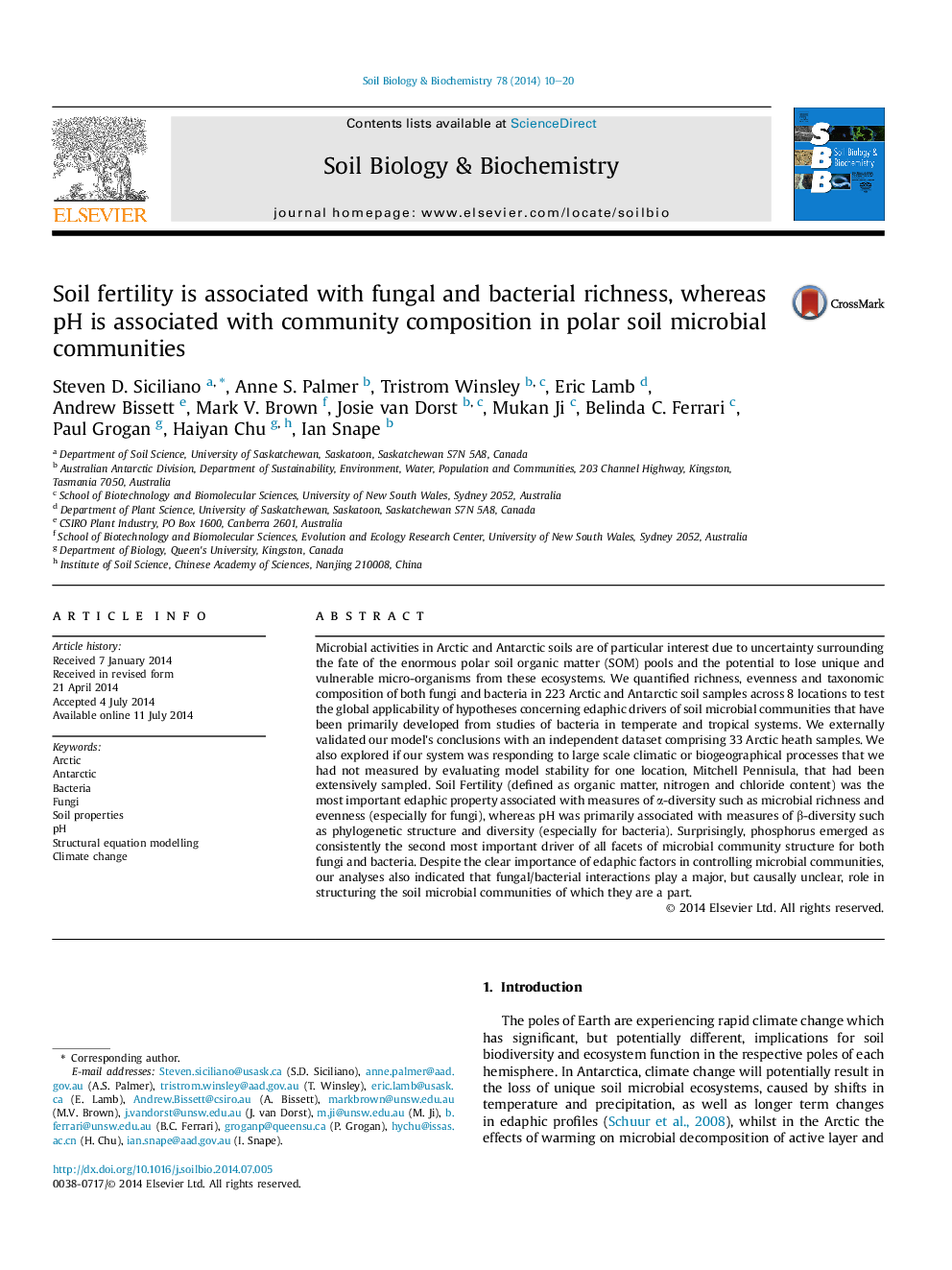| کد مقاله | کد نشریه | سال انتشار | مقاله انگلیسی | نسخه تمام متن |
|---|---|---|---|---|
| 2024564 | 1542606 | 2014 | 11 صفحه PDF | دانلود رایگان |

• We sampled bacteria and fungi from 223 soils at 8 locations from both polar regions.
• Structural equation models linked edaphic properties to measures of α and β-diversity.
• Fertility was the major factor influencing α-diversity.
• pH was the major factor influencing β-diversity.
• Phosphorus was consistently importance for both α and β-diversity.
Microbial activities in Arctic and Antarctic soils are of particular interest due to uncertainty surrounding the fate of the enormous polar soil organic matter (SOM) pools and the potential to lose unique and vulnerable micro-organisms from these ecosystems. We quantified richness, evenness and taxonomic composition of both fungi and bacteria in 223 Arctic and Antarctic soil samples across 8 locations to test the global applicability of hypotheses concerning edaphic drivers of soil microbial communities that have been primarily developed from studies of bacteria in temperate and tropical systems. We externally validated our model's conclusions with an independent dataset comprising 33 Arctic heath samples. We also explored if our system was responding to large scale climatic or biogeographical processes that we had not measured by evaluating model stability for one location, Mitchell Pennisula, that had been extensively sampled. Soil Fertility (defined as organic matter, nitrogen and chloride content) was the most important edaphic property associated with measures of α-diversity such as microbial richness and evenness (especially for fungi), whereas pH was primarily associated with measures of β-diversity such as phylogenetic structure and diversity (especially for bacteria). Surprisingly, phosphorus emerged as consistently the second most important driver of all facets of microbial community structure for both fungi and bacteria. Despite the clear importance of edaphic factors in controlling microbial communities, our analyses also indicated that fungal/bacterial interactions play a major, but causally unclear, role in structuring the soil microbial communities of which they are a part.
Journal: Soil Biology and Biochemistry - Volume 78, November 2014, Pages 10–20